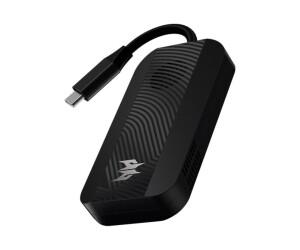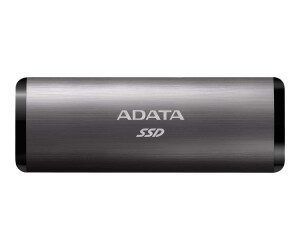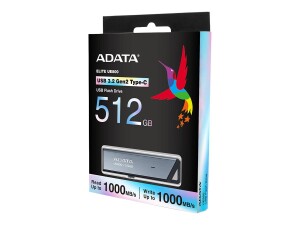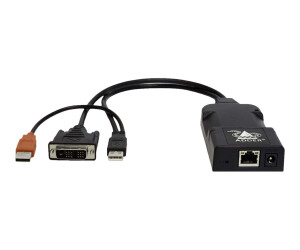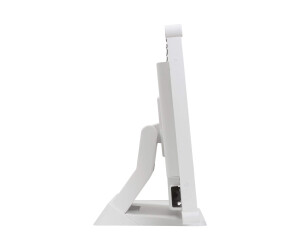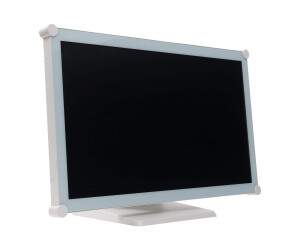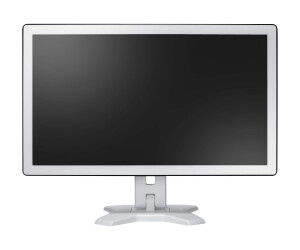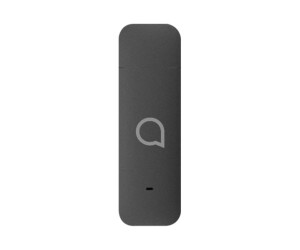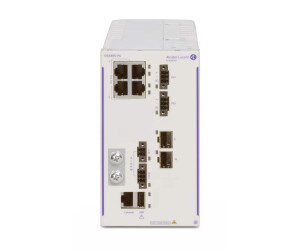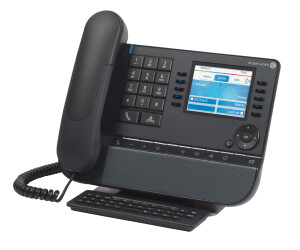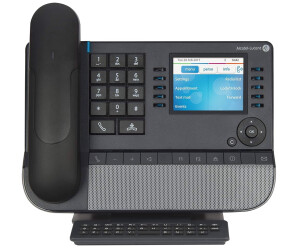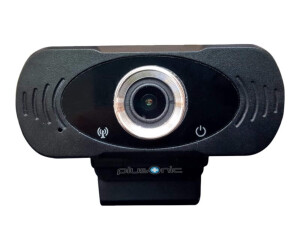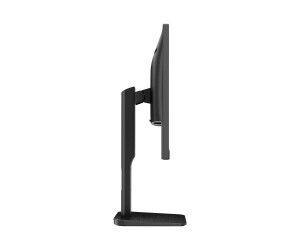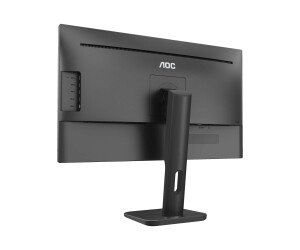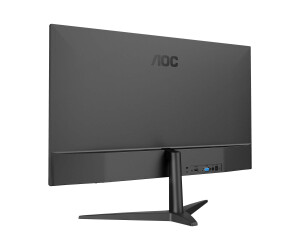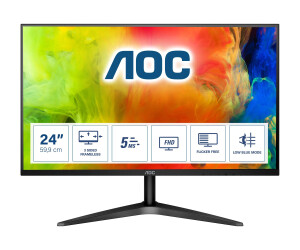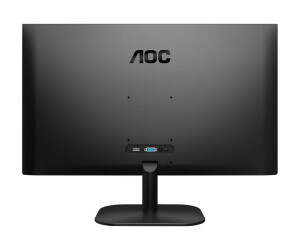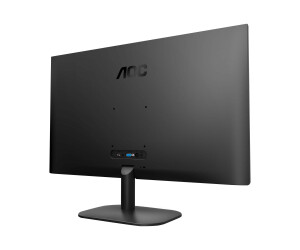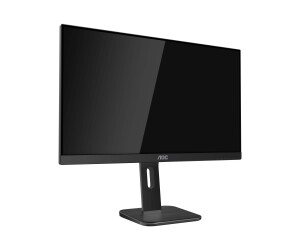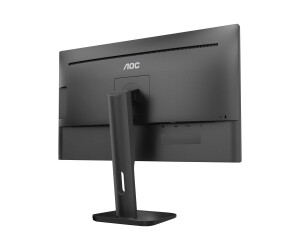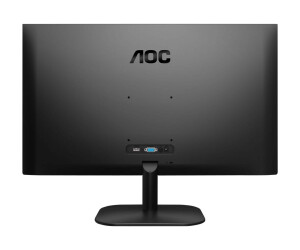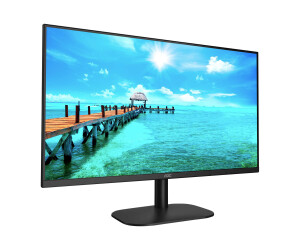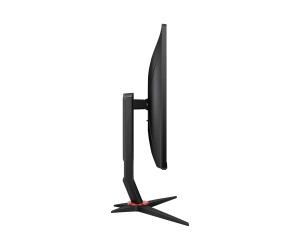Plug and Play
"Plug-and-Play" is a term used in information technology (IT) to describe the ability of a system or device to automatically integrate into a larger system without the need for manual configuration. The concept of Plug-and-Play has played a crucial role in simplifying the user-friendliness of technology products in recent decades.
Historical Context:
In the late 1980s, the introduction of Plug-and-Play marked a significant development in the IT industry, necessitated as a response to the increasing complexity of computer hardware. At that time, the computer industry was undergoing rapid growth, resulting in a multitude of hardware options and configurations. This diversity of hardware components presented a significant challenge: users had to manually configure the various components to ensure smooth interaction with the existing system.
A common practice was to use so-called jumpers and DIP switches on the circuit boards of the hardware components. Jumpers are small bridges that can be placed on specific pins on a circuit board to adjust the functionality of the hardware. DIP switches (Dual Inline Package), on the other hand, are tiny switches attached to the board and typically offer two possible settings. By combining jumpers and DIP switches, the hardware could be set to specific configurations to ensure it interacted properly with the rest of the system.
This process was time-consuming, technically demanding, and associated with a high error rate. Users needed to possess a deep understanding of hardware functionalities and often had to rely on manuals and technical documentation to make the correct settings. Incorrect configuration could lead to incompatibilities, which in turn could result in system crashes, data loss, and other potential issues.
During this time, it was not uncommon for computer users to regularly delve into the depths of hardware configuration to ensure that new components like graphics cards, hard drives, or memory modules cooperated properly with the existing system. These manual configuration processes were time-consuming and required technical expertise, significantly limiting user convenience.
In the midst of this scenario, the need for a more user-friendly solution emerged. The introduction of Plug-and-Play in the late 1980s marked a milestone in IT history. This technology enabled the automatic detection and configuration of hardware components, greatly enhancing user-friendliness and drastically reducing the need for manual intervention. Plug-and-Play was a crucial step towards a more efficient and user-friendly use of computers.
Technical Foundations:
The technical foundations of Plug-and-Play are crucial to understand how this function is realized in the IT world. Plug-and-Play capable hardware consists of specially designed components with integrated circuits and chipsets. These special circuits and chipsets play a key role in enabling the operating system to automatically detect and configure the connected hardware.An essential feature of these special circuits is their ability to communicate with the operating system through specific protocols and interfaces. One of the most well-known and widely used communication protocols in this context is the PCI bus (Peripheral Component Interconnect). The PCI bus is a standardized interface that allows a wide variety of components, such as graphics cards, network cards, and memory expansions, to be inserted and operated in a computer.
The key to Plug-and-Play functionality lies in the fact that these special circuits and chipsets are able to actively exchange information with the operating system. In doing so, they provide the operating system with important information about the identified hardware components, such as manufacturer information, supported functions, resource requirements, and much more.
This communication occurs via predefined protocols and message formats understood by all Plug-and-Play capable components and the operating system in common. This enables smooth communication and interaction between the various components.
Another crucial aspect is the ability of Plug-and-Play components to specify their resource needs. This includes, for example, required Interrupt Request Lines (IRQs), memory address ranges, and I/O ports. By communicating this information to the operating system, it can allocate the necessary resources to ensure the proper functioning of the hardware components.
Overall, these technical foundations enable automatic configuration of the hardware once it is connected to the system. This eliminates the need for manual intervention by the user, significantly improving user-friendliness and reducing potential sources of error.
It is important to emphasize that these technical foundations of Plug-and-Play were a crucial advancement in reducing the complexity of hardware integration and significantly improving the user-friendliness of computers and other electronic devices.
Automatic Detection:
The automatic detection of Plug-and-Play capable hardware is a crucial step in the process of seamlessly integrating new components into a computer system. When a Plug-and-Play capable device is connected to the system, the operating system initiates a process known as "enumeration". In this step, a series of critical tasks are performed to ensure that the new device is properly detected and configured.Device Identification:
First and foremost, it is crucial that the operating system identifies the connected device. This is done through communication with the special circuits and chipsets of the Plug-and-Play capable hardware. These components transmit important information about the device, such as manufacturer information, model number, and supported functions.Resource Allocation:
In the next step, specific resources are allocated to the connected device. These include, among other things, IRQs (Interrupt Request Lines), I/O ports (Input/Output Ports), and memory addresses. These resources are crucial for the proper functionality of the device and must therefore be managed carefully.Avoidance of Conflicts:
During resource allocation, it is important to avoid conflicts. The operating system checks whether the allocated resources are already being used by other devices. If necessary, adjustments are made to ensure that all components can work together smoothly.
Driver Installation:
In many cases, it is necessary to install specific drivers for the Plug-and-Play device to function properly. These drivers provide the necessary software interface between the operating system and the hardware. Modern operating systems often have an extensive database of pre-installed drivers that can be used automatically.
Update of System Configuration:
After the new device has been successfully detected and configured, the operating system updates the system configuration. This may include information about the newly added hardware components, their properties, and resource allocations.
Careful execution of the enumeration ensures that the new Plug-and-Play device can interact smoothly with the existing system. It reduces the likelihood of conflicts and ensures that all resources are utilized efficiently.
Driver Installation:
Driver installation is a critical step in the Plug-and-Play process that ensures seamless interaction between the connected device and the operating system. These are specialized software packages that enable communication between the hardware and the operating system. The technical aspects of driver installation are detailed below:
Need for Drivers:
Drivers are necessary to ensure that the operating system can correctly interpret and utilize the specific characteristics and functionalities of the connected device. This is crucial because different devices have different requirements and communication protocols.
Specialized Drivers for Plug-and-Play Devices:
Plug-and-Play devices are often specialized hardware that serves specific functions. For this reason, customized drivers tailored to the specific requirements and characteristics of the device are required.
Automatic Driver Installation in Modern Operating Systems:
Modern operating systems, such as Windows, macOS, and many Linux distributions, have extensive driver databases. These databases contain a wide range of pre-installed drivers for a variety of hardware components. When a Plug-and-Play device is connected, the operating system automatically attempts to use the appropriate driver from the database.
Plug-and-Play ID and Hardware Detection:
Each Plug-and-Play device has a unique identification number known as the Plug-and-Play ID. This ID is used during the detection process to determine which driver is needed for the specific device. The operating system compares the Plug-and-Play ID of the connected device with the available drivers in its database.
Installation of the Correct Driver:
When a suitable driver is found, it is automatically installed. This includes making all necessary configurations to ensure that the device can interact smoothly with the operating system and other components.
Missing or Outdated Drivers:
If the operating system does not find a pre-installed driver for the connected device, it may be necessary to manually install the driver. This can be done by the user downloading and installing the driver from the manufacturer's website.
Driver Update and Management:
It is important to regularly update drivers to ensure performance and compatibility with new technologies and applications. Modern operating systems often offer automatic updates for drivers.
Driver installation is a critical step in the Plug-and-Play process that ensures connected devices function properly. Modern operating systems have extensive databases of pre-installed drivers, making automatic installation easier. However, if necessary, users can manually install drivers to ensure the hardware functions smoothly.
Advantages of Plug-and-Play:
Plug-and-Play (PnP) has played a crucial role in the IT world and brings a variety of benefits for users and system administrators. Here are the detailed advantages of Plug-and-Play:
User-Friendliness:
Plug-and-Play significantly simplifies hardware installation for the average user, particularly those who are not technical experts. Previously, users had to manually configure settings, such as changing jumpers or configuration files. With Plug-and-Play, they no longer have to deal with these technical details. Instead, they can connect the device, and the operating system takes care of the rest. This helps lower the barrier for handling computers and electronic devices.
Time Saving:
Plug-and-Play greatly reduces the time needed to set up new hardware. Previously, hardware configuration could take hours or even days, especially in complex systems. With Plug-and-Play, the setup is typically done in a matter of minutes. This is particularly important in business environments where time and productivity are crucial.
Error Reduction:
Plug-and-Play eliminates many potential sources of errors that can occur in manual configuration processes. Since the operating system handles the configuration automatically, conflicts in resource allocations, such as IRQ conflicts or address conflicts, are avoided. This significantly reduces the likelihood of misconfigurations, leading to a more stable and reliable system performance.
User-Friendly Hardware Upgrades:
Plug-and-Play also makes hardware upgrades easier. Users can simply add new components like graphics cards, memory, or printers without worrying about complex configurations. This encourages the upgrading of hardware, enhancing the performance and functionality of computers.
System Flexibility:
Plug-and-Play enables increased system flexibility. Users can easily add or remove devices based on their current requirements. This is particularly beneficial in business environments where hardware requirements may change frequently.
Reduction of IT Effort:
In business environments, Plug-and-Play leads to a reduction in IT effort. System administrators spend less time on configuration and troubleshooting, increasing their efficiency and lowering overall costs for managing IT infrastructures.
Compatibility and Interoperability:
Plug-and-Play promotes compatibility and interoperability of hardware components from different manufacturers. Since all PnP devices follow a common standard, they can be seamlessly integrated into various systems, regardless of their origin.
Plug-and-Play significantly enhances the user experience by increasing user-friendliness, saving time, reducing errors, and enhancing system flexibility. It has revolutionized the way hardware is integrated into computers and electronic devices and plays a crucial role in today's digital world.
Challenges and Limitations:
Despite the numerous advantages, Plug-and-Play technology also brings some challenges and limitations. The following are detailed explanations:
Driver Conflicts:
Description: In rare cases, driver conflicts may occur. This happens when an operating system has difficulty identifying the correct drivers for a specific device. This can lead to malfunctions or reduced performance of the affected device.
Causes: Driver conflicts can occur when multiple drivers are installed for the same device or when a specific driver is not compatible with other components of the system.
Solutions:
- Automatic Driver Update: Modern operating systems have features for automatic driver updates to minimize conflicts.
- Manual Driver Installation: In some cases, users may manually select and install the correct driver to resolve conflicts.
Unsupported Hardware:
Description: Not all hardware is Plug-and-Play capable. Especially older devices often require manual configurations to be compatible with a system. This means users may need technical expertise to integrate these devices properly.
Causes: Older hardware models may not have been developed with Plug-and-Play technology or may not be fully compatible with modern operating systems.
Solutions:
- Manual Configuration: Users may need to make manual settings to get older hardware components up and running. This requires an understanding of the specific requirements of these devices.
Limited Support for Specialized Hardware:
Description: Specialized hardware that falls outside the mainstream range may not be fully Plug-and-Play capable. This often applies to devices with very specific functions or requirements.
Causes: Specialized hardware components may require individual configurations and special drivers that are not always included in pre-installed driver databases.
Solutions:
- Manufacturer Support: In some cases, the manufacturer may provide specialized drivers or guidance to facilitate the integration of this hardware.
- Expert Knowledge: Certain specialized hardware components may require specific expertise to integrate them successfully.
Dependence on Software and Operating System Versions:
Description: The Plug-and-Play functionality may, in some cases, depend on the specific software and operating system version installed on the system. Older operating systems or specific software environments may not provide full Plug-and-Play support.
Causes: The implementation of Plug-and-Play can vary depending on the operating system and software environment. Newer operating systems are often better designed to support Plug-and-Play devices.
Solutions:
- Software Update: In some cases, updating the operating system or relevant software versions can enhance Plug-and-Play functionality.
These challenges are important aspects to consider in order to fully leverage the benefits of Plug-and-Play. With a thorough understanding of these limitations, users can effectively work with the technology and address potential issues successfully.
Developments and Current Status:
The development and current status of Plug-and-Play reflect the rapid evolution of the IT industry and the continuous improvement of user experience. Here are the detailed developments and current status of Plug-and-Play:
Standardization of Hardware Interfaces:
Description: A crucial advancement in Plug-and-Play technology is the standardization of hardware interfaces. This means manufacturers worldwide rely on common communication protocols and interface standards to ensure the interoperability of their devices.
Significance: Standardized interfaces enable Plug-and-Play devices to seamlessly integrate into a variety of systems, regardless of manufacturer or model. This significantly enhances the flexibility and interchangeability of hardware components.
Automatic Driver Update and Management:
Description: Modern operating systems often offer automatic updates for drivers. This means users no longer need to manually search for or download driver updates.
Significance: This automation makes it easier for users to keep their hardware up to date and benefit from the latest features and improvements. It also contributes to ensuring the security and stability of the system.
Increased Plug-and-Play Compatibility:
Description: Due to the advancement of Plug-and-Play technologies and standards, the compatibility of hardware components has further increased. Modern devices are often inherently Plug-and-Play capable.
Significance: This makes it easier for users to add new hardware components without worrying about manual configurations or driver installations. This contributes to a seamless user experience.
Expansion to Non-Hardware-Related Plug-and-Play Technologies:
Description: The concept of Plug-and-Play has extended beyond hardware to other areas, such as Plug-and-Play software and applications. This allows for easier integration and use of various software products.
Significance: By applying Plug-and-Play principles to software applications, the installation and use of programs are simplified, thereby increasing user productivity and efficiency.
Integration of AI and Machine Learning:
Description: With the advent of artificial intelligence and machine learning, systems are becoming smarter in detecting and configuring hardware components.
Significance: This leads to an even smoother Plug-and-Play experience, as systems are better able to understand the specific requirements of devices and automatically make the right settings.
Plug-and-Play is now widespread and an integral part of modern IT systems. Through the continuous development of technology and the standardization of hardware interfaces, user-friendliness and hardware integration have significantly improved. The integration of artificial intelligence and machine learning promises even further advancements in the future.
Evolution of Plug-and-Play:The evolution of Plug-and-Play provides a fascinating insight into the ongoing development of the technology that has significantly influenced how we interact with hardware and software. Here is a detailed portrayal of the evolution of Plug-and-Play:
Initial Focus on Hardware:
Early Years (Late 1980s and 1990s): The initial focus of Plug-and-Play was on automating hardware detection and configuration. During this time, it was common for users to manually configure hardware components by adjusting jumpers, DIP switches, and other physical settings.Hardware Interoperability and Standardization:
Standardization of Interfaces (1990s): Over time, interface standards like USB (Universal Serial Bus) and IEEE 1394 (FireWire) were introduced. This standardization allowed different devices to communicate through a common interface, greatly enhancing Plug-and-Play functionality.Integration of Driver Systems:
2000s: Modern operating systems integrated extensive driver databases, allowing for the automatic detection of many common hardware components and the installation of the corresponding drivers. This made setting up new hardware even easier.Expansion to Software Interoperability:
Shift to Software (2000s and 2010s): Over the years, Plug-and-Play evolved to include software applications. This refers to the ability of software to interact seamlessly with other programs or services.Interoperability and Standards in Software Development:
Data Formats and Protocols (2010s and 2020s): In recent years, increased attention has been given to the interoperability of software applications. This means that programs are capable of exchanging data in a common format and accessing shared protocols.APIs and SDKs for Developers:
Provision of APIs (Application Programming Interfaces) and SDKs (Software Development Kits): Developers now have the option to utilize APIs and SDKs to facilitate the integration of their software with other applications. This promotes the development of applications that seamlessly fit into larger ecosystems.Cloud-based Plug-and-Play Solutions:
Integration into the Cloud (since the 2010s): With the increasing shift of applications and services to the cloud, Plug-and-Play concepts have also been integrated into cloud environments. This allows for easy scaling and deployment of applications in large distributed environments.Future Developments: AI and Machine Learning:
Incorporation of AI (Artificial Intelligence) and Machine Learning: The future of Plug-and-Play may involve the integration of AI and machine learning to further enhance the automation of configuration processes and optimize user-friendliness.Plug-and-Play has evolved from its initial focus on hardware detection to a more comprehensive concept that encompasses both hardware and software integration. The standardization of interfaces, integration of driver systems, and promotion of interoperability have significantly improved user-friendliness in the IT world.
Universal Serial Bus (USB):
The Universal Serial Bus (USB) undoubtedly represents one of the most significant advancements in the history of Plug-and-Play technologies. With its introduction, the way we connect and use peripheral devices with computers changed. The following provides a detailed treatment of the USB standard, covering its inception, technical aspects, and its impact on computer technology:
Origin and Background:
The Universal Serial Bus was developed in the mid-1990s to create a unified interface for connecting peripheral devices to computers. Prior to the introduction of the USB standard, there were a plethora of different ports and interfaces, often leading to incompatibilities and difficulties in hardware integration.Technical Foundations:
The USB standard is a serial interface that enables data transmission between a host (usually a computer) and connected devices. It operates as a point-to-point connection where one host can support multiple devices.Connector Types and Versions:
The USB standard encompasses various connector types, including USB-A, USB-B, Mini-USB, Micro-USB, and USB-C. Each connector type has specific use cases and compatibilities. The different USB versions, such as USB 1.1, USB 2.0, USB 3.0, USB 3.1, and USB 3.2, offer varying transmission speeds and features.Plug-and-Play Capability:
One of the most outstanding advantages of the USB port lies in its Plug-and-Play capability. This means that users can simply connect a USB device to the computer, and the operating system recognizes and configures the device automatically. Drivers are often installed automatically or are already present in the operating system.Versatility of USB Devices:
The USB standard supports a wide range of devices, including printers, mice, keyboards, external hard drives, cameras, smartphones, audio and video devices, and many more. By using USB hubs, multiple devices can be connected to a single USB port.Power Delivery via USB (USB Power Delivery):
A significant advancement was the introduction of USB Power Delivery (PD). This allows not only data but also power to be transmitted through the USB port. This enables the charging of devices like laptops, tablets, and smartphones via USB.Impacts and Significance:
The USB standard revolutionized the connection and interaction of peripheral devices with computers. It rendered the need for specific drivers for many devices obsolete. USB significantly improved interoperability between different devices and operating systems.Future Developments:
The advancement of USB technologies is an ongoing process. Future developments could bring higher transmission speeds, greater energy efficiency, and new application fields. The introduction of the Universal Serial Bus was a milestone in the history of Plug-and-Play technologies. The standardization of the interface and the ability to transmit data and power through the USB port greatly facilitated the use of peripheral devices and significantly improved the user-friendliness of computers.Automatic Updates and Configuration:
Automatic updates and configuration are crucial elements in Plug-and-Play technology that help ensure user-friendliness and the smooth functionality of hardware components. The following aspect is explained in detail:
Automatic Driver Updates:
Functionality: Modern operating systems are equipped with mechanisms for automatic driver updates. The system regularly checks a central driver database to determine if updated drivers are available for connected hardware components. If needed, these are then downloaded and installed automatically.
Advantages:
1. Simplicity for the user: The user does not have to manually handle driver updates, saving time and reducing errors. 2. Improved security and stability: Updated drivers often fix security vulnerabilities and enhance system stability.
Example: Suppose a user connects a new graphics card to their computer. The operating system automatically detects the device and checks if a newer driver is available. If so, it is downloaded and installed to ensure optimal performance.
Automatic Configuration:
Functionality: With Plug-and-Play functionality, the operating system initiates a process called "enumeration" as soon as a Plug-and-Play-enabled device is connected. During this process, the system identifies the device and allocates resources such as IRQs (Interrupt Request Lines), I/O ports, and memory addresses that it needs for proper functioning.
Advantages:
1. Reduction of misconfigurations: Automatic resource allocation prevents errors in manual configuration. 2. Time-saving: The user does not need to deal with technical details, significantly speeding up the installation process.
Example: When a user connects an external hard drive via a USB port, the operating system automatically recognizes the device and allocates the necessary resources for data transfer to occur.
Security and Compatibility:
Security Updates: Automatic updates ensure that known security vulnerabilities are patched, increasing the integrity and security of the system.
Compatibility Optimization: Automatic updates help address potential compatibility issues between different hardware components or between hardware and the operating system.
Limitations and Concerns:
It's important to note that automatic updates can also pose potential risks. In rare cases, updated drivers may lead to incompatibilities or malfunctions. Therefore, it is advisable to perform a system backup before significant updates.
Automatic updates and configurations ensure that the Plug-and-Play functionality is always up-to-date and that any compatibility issues are addressed. This significantly contributes to the improvement of user-friendliness and performance of computers and other electronic devices.
Plug-and-Play in the Internet of Things (IoT):
Plug-and-Play in the context of the Internet of Things (IoT) represents a crucial advancement in this technology, enabling seamless integration of connected devices. This is particularly important in an environment involving a wide variety of manufacturers and device types. The role of Plug-and-Play in IoT is detailed below:
Background and Significance in IoT:
The Internet of Things refers to the interconnection of physical objects and devices equipped with sensors, software, and connectivity to collect and exchange data. These devices range from household appliances to industrial machinery.
Given the diversity of manufacturers and device types in the IoT environment, seamless integration is crucial to fully leverage the capabilities of the interconnected ecosystem.
Plug-and-Play in the IoT Context:
Automatic Configuration and Detection: Similar to Plug-and-Play in conventional computers, Plug-and-Play in IoT enables the automatic detection and configuration of devices. This is crucial for rapidly and efficiently integrating devices into the network.
Interoperability Between Devices: Plug-and-Play in IoT ensures that different devices from various manufacturers can communicate seamlessly. This is vital for realizing complex IoT ecosystems where a multitude of devices must collaborate.
Technical Foundations of Plug-and-Play in IoT:
Standardized Communication Protocols: In the IoT domain, specific communication protocols are crucial to ensure smooth integration. Protocols like MQTT (Message Queuing Telemetry Transport) or CoAP (Constrained Application Protocol) can be used.
Unified Identification and Authentication: Plug-and-Play in IoT requires unified methods for identifying and authenticating devices on the network to ensure only authorized devices communicate with each other.
Role of Standards and Certifications:
IoT Standardization Organizations: Organizations like the Industrial Internet Consortium (IIC) or the Open Connectivity Foundation (OCF) play a crucial role in developing standards enabling Plug-and-Play in IoT.
Certifications for Plug-and-Play Devices: There are certification programs to ensure that devices meet the necessary standards for smooth integration into IoT networks.
Benefits of Plug-and-Play in IoT:
User-Friendliness for End Users: Plug-and-Play in IoT greatly simplifies the installation and configuration of connected devices, promoting the use and acceptance of IoT in households and businesses.
Accelerated Implementation of IoT Solutions: Companies can implement IoT solutions more quickly as the integration of new devices occurs seamlessly and without complications.
Challenges and Outlook for the Future:
Security and Privacy: The integration of Plug-and-Play in IoT also requires careful consideration of security aspects to ensure the integrity and privacy of data.
Further Standardization and Innovation: The advancement of Plug-and-Play in IoT will be propelled by the introduction of new standards and technologies that will further enhance interoperability and functionality.
Plug-and-Play plays a crucial role in the Internet of Things by enabling the seamless integration of connected devices. This is essential for realizing the full potential of IoT, allowing users and businesses to connect and utilize a variety of devices from different manufacturers.
Security Aspects:
Security aspects in the context of Plug-and-Play are crucial, as the seamless integration of hardware can also bring potential security risks. It is essential to implement mechanisms to ensure that connected devices are trustworthy in order to prevent potential threats from malicious hardware. These security aspects are explained in detail below:
Authentication and Device Identification:
Digital Certificates and Signatures: To verify the authenticity of connected devices, digital certificates and signatures can be used. These allow for the verification of a device's origin and integrity.
Unique Identifiers: Each device should have a unique identifier that confirms its origin and authenticity.
Security Checks and Validation:
Device Validation: The operating system should implement mechanisms to check connected devices for potential threats or anomalies. This can be done through the evaluation of integrity checks and signatures.
Whitelisting and Blacklisting: Administrators can create lists of allowed (whitelist) and disallowed (blacklist) devices to control the type of connected hardware.
Firewalls and Intrusion Detection Systems (IDS):
Network-Based Security Measures: In addition to individual device security measures, network measures like firewalls and IDS should be implemented to monitor traffic and detect potential anomalies.Security Policies and Access Control:
User and Role-Based Access Control: Security policies should specify which users or system components are allowed to access specific devices or resources. This reduces the risk of unauthorized users accessing critical resources.
Dynamic Access Permissions: Depending on the type and use of the device, dynamic access rights should be defined to ensure that only necessary functions are enabled.
Security Updates and Patch Management:
Regular Updates and Patches: It is crucial to keep operating systems and drivers up to date regularly to close known security vulnerabilities.
Physical Security Measures:
Physical Device Access: It should be ensured that only authorized individuals have physical access to the system and connected devices to prevent tampering.
Security Awareness and Training:
User Sensitization: Users should be trained on best security practices when dealing with connected devices to minimize the risk of security breaches.
It is crucial for Plug-and-Play systems to implement robust security measures to enhance user-friendliness without compromising security. By implementing authentication mechanisms, security checks, access control, and regular updates, potential threats from malicious hardware can be effectively minimized.
The Future of Plug-and-Play:
The future of Plug-and-Play promises exciting developments and innovations that will enable seamless integration of increasingly complex technologies and systems. With the advancement of technology, some promising trends are expected:
Automation and AI Support:
Advanced AI algorithms and machine learning models can make the detection and configuration of hardware even more precise and efficient.
Intelligent systems may be able to independently manage and optimize complex hardware environments.
Enhanced Interoperability:
By introducing standardized communication protocols and interfaces, different types of devices can collaborate seamlessly.
Another step in this direction could be the introduction of interoperable platforms that facilitate communication between different manufacturers and technologies.
Improved Security Mechanisms:
Future Plug-and-Play systems will likely integrate advanced security measures to protect the identity and integrity of connected devices.
Artificial intelligence and machine learning could also play a larger role in detecting security threats and anomalies.
Expansion into New Technology Areas:
Plug-and-Play could expand into areas that have benefited less from this technology so far, such as in the medical or energy sector.
New applications could emerge in areas like autonomous driving, augmented reality, or virtual reality.
Higher Complexity of Systems:
The integration of Plug-and-Play into increasingly complex systems, such as in Industry 4.0 environments, is expected to play a larger role.
This could enable the seamless integration of robotics, IoT, advanced control systems, and other complex technologies.
Interface Standards and Protocols:
The advancement of standards and protocols will play a key role in ensuring seamless Plug-and-Play integration.
Universal communication standards could enable a wide range of devices and technologies to communicate with each other.
Consideration of Environmental Aspects:
Future developments may increasingly focus on energy-efficient and resource-saving Plug-and-Play technologies.
The sustainable integration of technology into existing ecosystems will play an important role.
The future holds promising prospects for advancing the seamless integration of technology. This will help facilitate and improve the use of complex systems and technologies for end users and businesses.
Integration of Plug-and-Play into Operating Systems:
The integration of Plug-and-Play into operating systems is a crucial step in enabling the seamless use of hardware components. Operating systems like Windows, macOS, and various Linux distributions have steadily improved their Plug-and-Play functionality over time. They now offer sophisticated services and tools that support the seamless integration of hardware and software. The specific measures and technologies implemented in operating systems to support Plug-and-Play are described below:
Automatic Hardware Detection:
The operating systems have mechanisms for automatically detecting connected hardware. Once a new device is connected, the operating system initiates a process to identify the device and integrate it with the system.
Device Driver Management:
Operating systems manage an extensive driver database. When a new Plug-and-Play device is connected, the operating system automatically searches for the appropriate driver and installs it. If the driver is unavailable, an attempt is made to use a generic driver to ensure preliminary functionality.
Device Management and Resource Allocation:
The operating system handles the allocation of resources such as IRQs, I/O ports, and memory addresses for each connected device. This is a crucial step in ensuring that the various hardware components can work together properly.
User Interaction and Notifications:
Operating systems provide user interfaces and notification systems to inform the user about newly connected hardware and display possible actions.
Automatic Driver Updates and Management:
Modern operating systems often integrate automatic update mechanisms for drivers and system components. This ensures that the Plug-and-Play functionality is always up to date and any compatibility issues are addressed.
Configuration and Settings:
Operating systems offer user interfaces and settings options to customize the configuration of connected hardware. This may include selecting printer settings or configuring display settings, for example.
Error Handling and Troubleshooting:
If issues arise during the integration of hardware, operating systems provide diagnostic and troubleshooting tools to identify the causes and offer solutions.
Driver Databases and Hardware Compatibility:
Operating systems manage extensive driver databases to ensure support for a wide range of hardware components.
By integrating Plug-and-Play functionality, operating systems have significantly improved user-friendliness. Through automatic detection, driver installation, resource management, and user interaction, they enable seamless integration of hardware and software. This significantly contributes to the efficient use of computers and other electronic devices.
Hot Swapping:
Hot Swapping is a fascinating advancement of the Plug-and-Play concept that allows devices to be added or removed while the system is running, without the need to restart the entire system. This technology has a significant impact on the user-friendliness and flexibility of computers and other electronic devices. Here is a detailed explanation of Hot Swapping:
Definition of Hot Swapping:
Hot Swapping, also referred to as "Hot Plug" or "Hot Insertion," is a concept that allows hardware components to be introduced or removed from a running system without interrupting the operation of the system.
Applicable Technologies:
Hot Swapping is particularly prevalent in devices and interfaces considered Plug-and-Play capable, such as USB (Universal Serial Bus), SATA (Serial Advanced Technology Attachment), PCIe (Peripheral Component Interconnect Express), and Thunderbolt.
Advantages of Hot Swapping:
Minimization of Operational Disruptions: Hot Swapping allows for the addition or replacement of hardware without the need to restart the system. This is especially advantageous in mission-critical environments to minimize downtime.
User-Friendliness: Users can connect or disconnect devices like USB drives, external hard drives, mice, or keyboards with ease and without technical expertise.
Scalability: Hot Swapping enables easy expansion of hardware components, which is extremely useful in various applications, from servers to home computers.
Technical Challenges and Solutions:
Security Aspects: Adding or removing hardware during operation can pose security risks. Therefore, mechanisms for authenticating and authorizing Hot-Swappable devices are necessary.
Driver Management: Operating systems must be able to automatically load drivers for newly added hardware to ensure proper functionality.
Resource Conflicts: Hot Swapping requires efficient resource management to prevent conflicts in the allocation of resources such as IRQs or memory addresses.
Examples of Hot Swapping Applications:
USB Devices: USB devices like mice, keyboards, printers, cameras, and memory sticks can be added or removed at any time during operation.
External Hard Drives: External hard drives can be connected or disconnected without the need to restart the computer.
Server Hardware: In data centers, Hot Swapping allows for the addition or replacement of hardware components like hard drives, network cards, or memory without impacting server operation.
Security Aspects of Hot Swapping:
Authentication: To ensure security, Hot-Swappable devices should have digital certificates or identification mechanisms that verify their legitimacy.
Access Control: Administrators should have control over which users or devices can use Hot Swapping.
Future of Hot Swapping:
The advancement of Hot Swapping is expected to cover an even broader range of devices and interfaces, further enhancing flexibility and user-friendliness.
In the future, even more complex systems and server architectures may support Hot Swapping for an even greater variety of components.
Undoubtedly, Hot Swapping is a significant addition to the Plug-and-Play concept as it greatly enhances system flexibility and scalability. This technology continues to be utilized in various applications, contributing to the overall performance and user-friendliness of computers and electronic devices.
Plug-and-Play in the Corporate World:
Plug-and-Play plays a crucial role in the corporate world as it greatly simplifies the deployment of hardware on a large scale. Administrators can quickly connect and integrate new devices into the network, improving employee productivity. The various aspects and benefits of Plug-and-Play in the corporate environment are detailed below:
Efficient Hardware Deployment:
In businesses, new devices like computers, printers, monitors, or other peripherals often need to be provided to employees. With Plug-and-Play, these devices can be connected quickly and easily, without the need for extensive manual configurations.
Time Savings for IT Teams:
IT administrators save significant time in deploying new hardware. Instead of configuring each computer individually, they can simply connect the hardware, and the operating system takes care of the rest.
Enhancement of Employee Productivity:
Since new devices are ready for use quickly, employees can work more efficiently. They don't have to spend time on the technical configuration of hardware and can instead focus on their actual tasks.
Scalability and Flexibility:
Companies are often subject to constant change. With Plug-and-Play, they can quickly respond to changes by adding or replacing hardware components to meet evolving requirements.
Reduction of Downtime:
In situations where a device fails, it can be quickly replaced with a spare using Plug-and-Play. This minimizes downtime and ensures that operations continue smoothly.
Resource Allocation and Conflict Avoidance:
Plug-and-Play systems automatically manage the allocation of resources such as IRQs, I/O ports, and memory addresses. This minimizes conflicts and ensures that the various hardware components work together smoothly.
Easy Updating and Maintenance:
If new software or drivers are needed, they can be easily deployed and installed over the network. This simplifies system updates and maintenance.
Security Aspects:
Companies can implement security policies to ensure that only authorized devices can be integrated into the network. This is crucial for minimizing potential security risks.
Cost Efficiency:
Since less time is required for manual configuration, IT teams can work more efficiently. This leads to a reduction in the Total Cost of Ownership (TCO) for hardware management.
Plug-and-Play is a crucial concept in the corporate world, greatly facilitating the deployment and management of hardware. It allows for efficient resource utilization, improves employee productivity, and contributes to overall operational efficiency in businesses. With Plug-and-Play, companies can respond flexibly to changes and optimize their IT infrastructure.
More Complex Applications of Plug-and-Play:
Plug-and-Play extends far beyond the world of PCs and laptops, finding significant application in more complex environments such as data centers and industrial facilities. Here, it enables faster and more efficient installation and replacement of hardware components. Below, I will provide detailed descriptions of the specific applications of Plug-and-Play in these environments:
Data Centers:
Rapid Scalability: In data centers where numerous servers and network components are deployed, Plug-and-Play functionality is crucial. Administrators can quickly and easily add new servers, storage devices, or network components to increase capacity.
Reduction of Downtime: The ability to switch hardware components during operation minimizes downtime. Critical systems can continue to run while maintenance is being performed.
Resource Optimization: Data centers need to utilize resources efficiently. Plug-and-Play enables precise allocation of resources such as network bandwidth, storage, and processor performance.
Consistent Configurations: Through the automatic configuration of hardware components, administrators can ensure that all servers and network elements are set up according to company standards.
Flexibility for Cloud Infrastructures: In cloud data centers where dynamic resource adjustment is necessary, Plug-and-Play is indispensable. New virtual machines and storage resources can be seamlessly added or removed.
Industrial Facilities:
Real-Time Requirements: In industrial environments where real-time operations are critical, Plug-and-Play enables fast integration of control systems, sensors, and actuators.
Modularity and Flexibility: Industrial facilities often consist of various modules that need to be added or replaced as needed. Plug-and-Play greatly simplifies this process.
Reduction of Commissioning Time: When installing new machinery or equipment, Plug-and-Play principles can help shorten commissioning times as hardware integration occurs more quickly.
Security Certificates and Standards: In critical industrial environments, it is important that only certified and tested hardware is integrated. Plug-and-Play facilitates easy verification of compatibility with required security standards.
Maintenance Friendliness: In the event of failures or maintenance, faulty components can be quickly replaced with functional ones to maximize plant availability.
Integration of IoT Devices: In modern industrial environments where the Internet of Things (IoT) plays a significant role, Plug-and-Play enables seamless integration of connected devices and sensors.
In both environments, whether in data centers or industrial facilities, Plug-and-Play significantly contributes to enhancing the efficiency, flexibility, and reliability of systems. It enables faster response to changes, more efficient resource utilization, and reduction of downtime. By integrating hardware in complex environments, the operation of businesses and industrial facilities is greatly improved.
Developers and Plug-and-Play:
Hardware and software developers play a crucial role in integrating Plug-and-Play features into their products. The goal is to ensure that they can function smoothly in different environments. Creating well-designed Plug-and-Play software requires careful planning and implementation. Below, I will describe in detail how developers proceed to successfully integrate Plug-and-Play features into their products:
Consideration of Hardware Standards and Protocols:
Developers must understand and implement common hardware standards and communication protocols into their products. This enables seamless interaction with other components and systems.
Development of Plug-and-Play Drivers:
Developers must create drivers that allow the operating system to automatically recognize and configure the connected hardware. These drivers must be well-optimized and free of errors.
Implementation of Auto-Detection and Configuration:
The software must be designed to be capable of identifying and automatically configuring new hardware components. This requires the implementation of mechanisms for automatic device detection.
Deployment of Plug-and-Play Interfaces:
Developers need to provide interfaces and APIs (Application Programming Interfaces) that allow other software components to utilize Plug-and-Play functions. This promotes interoperability between different applications.
Ensuring Driver Compatibility:
It is important to ensure that the drivers for the hardware are compatible with various operating systems. This requires comprehensive testing and debugging.
Consideration of Security Aspects:
Developers must ensure that the Plug-and-Play implementation is secure to protect against potential threats from malicious hardware or drivers.
Support for Automatic Updates:
The software should be able to support automatic updates for drivers or other components. This ensures that the Plug-and-Play functionality is always up to date.
Documentation and Support:
Developers need to provide comprehensive documentation to facilitate the integration and use of Plug-and-Play functions for other developers and users. Effective customer support is also crucial.
Testing and Validation:
Thorough testing is crucial to ensure that the Plug-and-Play functions work flawlessly under various conditions and environments.
Regular Updates and Maintenance:
Developers must ensure that their products are regularly maintained and updated to ensure compatibility with new hardware standards and operating system versions.
In summary, the successful implementation of Plug-and-Play features requires thorough planning, careful development, and comprehensive testing. By considering hardware standards, developing drivers, and ensuring compatibility with different systems, developers can ensure that their products function smoothly in Plug-and-Play environments.
Future Developments:
With the emergence of technologies like artificial intelligence (AI) and machine learning (ML), exciting possibilities open up for the future of Plug-and-Play. It is possible that future systems will become even smarter and capable of seamlessly integrating even more complex hardware and software components. Here are the detailed developments that could be possible in this future:
Artificial Intelligence and Machine Learning:
AI and ML can be utilized to make systems better at recognizing and configuring new hardware and software. These technologies could identify patterns and relationships in the detected components and automatically make optimal configurations.
Adaptive Configuration:
Future Plug-and-Play systems could be capable of adapting to individual user preferences and requirements. They could learn how specific components interact with each other and suggest optimal settings.
Automatic Troubleshooting:
Intelligent Plug-and-Play systems could be capable of detecting errors or conflicts and automatically suggesting or implementing solutions. This would further enhance user-friendliness and minimize downtime.
Enhanced Support for Complex Applications:
Future developments could enable Plug-and-Play systems to support even more complex applications, such as Virtual Reality (VR), Augmented Reality (AR), or High-Performance Computing (HPC).
Improvements in Security:
Advances in technology could make it possible to develop even more secure Plug-and-Play systems. Intelligent systems could be capable of detecting and blocking malicious hardware or software.
Seamless Integration of IoT Devices:
With the proliferation of the Internet of Things (IoT), the integration of connected devices is becoming increasingly important. Future Plug-and-Play systems could be even better prepared to seamlessly integrate a variety of IoT devices.
Enhancement of Energy Efficiency:
Future Plug-and-Play systems could integrate intelligent energy management features to optimize energy consumption and support more environmentally friendly operating modes.
Advanced Interoperability:
Future systems may be even better equipped to interact with a variety of operating systems, protocols, and standards to enhance compatibility.
Real-Time Optimization:
Intelligent Plug-and-Play systems could be capable of adjusting settings in real-time to ensure the best possible operation based on current requirements.
The future, with the implementation of AI and ML, could offer an even smarter, more adaptable, and user-friendly experience through Plug-and-Play. It is expected that these technologies will elevate the integration of hardware and software to a new level, fundamentally changing the way we use technology.
Challenges and Outlook:
Despite the evident advantages of Plug-and-Play technologies, there are still some challenges that need to be addressed:
Interface Standards and Protocols:
One of the ongoing difficulties lies in the standardization of interfaces and protocols. Different manufacturers often use different standards, which can make the seamless integration of hardware more challenging.
Driver Conflicts and Compatibility:
In rare cases, driver conflicts can occur, especially when an operating system has difficulty identifying the correct drivers for a device. Compatibility between hardware and drivers is crucial.
Non-Supported Hardware:
Even today, there is hardware that is not fully Plug-and-Play capable. Particularly, older devices often require manual configurations, limiting the simplicity of the Plug-and-Play approach.
Security Aspects:
While Plug-and-Play enhances user-friendliness, it also raises security concerns. It is important for systems to determine if a connected device is trustworthy to protect against potential threats from malicious hardware.
Integration of Complex Applications:
For highly specialized applications, such as in industrial environments, integrating Plug-and-Play technologies can be more complex as specific requirements and interfaces need to be considered.
Outlook:
Despite these challenges, the future of Plug-and-Play holds some promising prospects:
Further Standardization of Interfaces:
Over time, a stronger standardization of interfaces and protocols is expected to occur. This would further facilitate the seamless integration of various technologies.
Advanced AI Integration:
Artificial intelligence and machine learning could assist in making Plug-and-Play systems even smarter. For example, they could automatically suggest the best configurations for specific hardware.
Improvements in IoT Integration:
Given the increasing importance of the Internet of Things, the integration of connected devices will be further optimized to ensure a smooth Plug-and-Play experience.
Continual Enhancements in Security:
The security aspects of Plug-and-Play are expected to be expanded further to protect against potential threats.
Intelligent Troubleshooting and Optimization:
Future systems could become even better at detecting and resolving errors, further enhancing the user experience.
Overall, it is expected that Plug-and-Play will continue to play a crucial role in technology development, advancing user-friendliness and the integration of hardware and software. Over time, challenges will be further minimized, and the benefits of Plug-and-Play technologies will become even more pronounced.
Security Aspects in Plug-and-Play Technology:
While Plug-and-Play technology undoubtedly offers many benefits in terms of user-friendliness and efficiency, it also brings security risks. Here are the detailed security aspects that need to be considered when applying Plug-and-Play technology:
Risk of Unauthorized Access:
If a device is connected without verification, there is a risk that it may allow unauthorized access to the system. This could potentially lead to attackers gaining access to sensitive data or executing malicious actions.
Infiltration of Malicious Hardware:
A connected device could contain malicious hardware components that compromise the system. This could enable hardware-based attacks that are harder to detect.
Driver-Based Attacks:
Malicious or manipulated drivers could be used to compromise the system. This could lead to malfunctions or even endanger the entire system.
Potential Threats through Firmware:
In some cases, connected devices could be manipulated through their firmware to execute malicious actions. This could be hard to detect and lead to serious security issues.
Need for Device Authentication:
To ensure security, it is important to implement mechanisms for device authentication. This could involve the operating system or application ensuring that only trusted devices are connected.
Integration of Security Mechanisms:
Operating systems and applications should integrate mechanisms for detecting and defending against potentially malicious hardware. This could include the use of antivirus and anti-malware programs, for example.
Regular Security Updates:
To respond to new security threats, it is important for operating systems and applications to be regularly updated. This should also include patches for security vulnerabilities in the Plug-and-Play functionality.
Guidelines for Secure Use of Plug-and-Play:
Users should be informed about best practices to ensure they use Plug-and-Play safely. This could include training on the safe handling of connected devices.
Monitoring of Plug-and-Play Activities:
Monitoring Plug-and-Play activities in the network is important to identify and investigate suspicious or unusual activities.
It is crucial to take the security aspects of Plug-and-Play technology seriously. By implementing security mechanisms, authentication, and regular updates, potential risks can be minimized, and the benefits of Plug-and-Play technology can be used safely.
Automatic Configuration of Networks:
Plug-and-Play technologies have had a significant impact on network configuration. Devices such as routers and switches can now be configured to automatically integrate into a network. This advancement has greatly simplified and expedited the setup of complex network infrastructures. Below, I will describe in detail the automatic configuration of networks:
Device Detection and Identification:
During the automatic configuration of networks, devices first identify their type. They exchange information to determine what functions they can perform and what type of network they support.
Address Allocation:
Plug-and-Play technologies allow devices to automatically obtain IP addresses. This is typically done through the Dynamic Host Configuration Protocol (DHCP), eliminating the need for manual configuration of IP addresses.
Network Topology Detection:
Devices can detect the network topology to determine how they are interconnected. This is crucial for efficient packet forwarding.
Automatic Configuration of Routing Tables:
Routers can automatically configure their routing tables to determine the best path for forwarding data packets. This is done based on information they receive from other devices in the network.
Security Configuration:
Plug-and-Play technologies can also assist in configuring security features. This may include the automatic setup of firewalls, Virtual Private Networks (VPNs), or other security mechanisms.
Integration with Network Management Tools:
Automatically configured devices can be seamlessly integrated into network management tools. This allows administrators to monitor and manage the status and performance of these devices.
Error Detection and Resolution:
Automatic configuration also enables devices to detect errors in network configuration and suggest or implement solutions automatically.
Compatibility with Various Network Protocols:
Plug-and-Play technologies are typically designed to be compatible with various network protocols and standards. This allows them to be deployed in different network environments.
The automatic configuration of networks through Plug-and-Play technologies has significantly simplified the setup and management of network infrastructures. This leads to significant time savings and reduces the likelihood of configuration errors. However, it is important to emphasize that careful planning and security considerations are still crucial to fully harness the benefits of these technologies.
Plug-and-Play in Medical and Automotive Technology:
Plug-and-Play technologies have gained crucial importance in the fields of medical technology and the automotive industry. In these highly specialized environments, it is crucial for various components such as sensors, monitors, or control units to collaborate smoothly to ensure the safety and efficiency of the systems. Below, I will explain in detail how Plug-and-Play is applied in these industries:
Medical Technology:
Device Integration and Interoperability:
In medical technology, various devices such as monitors, sensors, infusion pumps, and scanners need to collaborate seamlessly to enable accurate diagnoses and treatments. Plug-and-Play facilitates the easy integration of new devices into existing systems.
Safety and Reliability:
In medical environments, patient safety is of utmost priority. Plug-and-Play technologies enable medical devices to communicate securely with each other and provide accurate data, enhancing diagnosis and treatment.
Real-Time Monitoring and Control:
Plug-and-Play enables real-time monitoring of patient data. This is crucial for quickly responding to changing conditions and adjusting treatment plans.
Reduction of Misconfigurations:
By automatically detecting and configuring devices, the risk of misconfigurations is minimized, which is vital in medical environments.
Automotive Technology:
Integration of Sensors and Control Units:
In modern vehicles, there are a multitude of sensors and control units that need to collaborate to ensure a safe and efficient drive. Plug-and-Play enables smooth integration and communication of these components.
Error Detection and Resolution:
Plug-and-Play technologies enable the detection and resolution of errors in vehicle sensors or control units, improving the vehicle's reliability and safety.
Efficient Maintenance and Repair:
By automatically detecting components and accurately diagnosing errors, maintenance and repairs can be performed more quickly and efficiently.
Driver Assistance Systems and Autonomous Driving:
Plug-and-Play plays a crucial role in integrating driver assistance systems and sensors for autonomous driving. These systems must collaborate smoothly to ensure road safety.
Plug-and-Play is a critical factor for the safety, reliability, and efficiency of systems in medical and automotive technology. By seamlessly integrating components, complex systems can operate effectively, thereby improving the health and safety of patients and road users. However, it is important to emphasize that strict standards and quality controls are necessary to ensure that Plug-and-Play functions properly in these critical areas.
Expansion to Software and Applications:
In addition to hardware, the concept of Plug-and-Play has extended to software. In applications, for example, it allows the addition of plugins or extensions without cumbersome manual configuration. This advancement has significantly expanded the flexibility and functionality of software applications. Below, I will explain in detail how the concept of Plug-and-Play is applied to software and applications:
Modularity of Software:
Plug-and-Play in software allows for the modular structure of applications. Instead of having a monolithic application, different functions can be developed as separate modules. These modules can then be dynamically added or removed to expand or customize the application's functionality.
Adding Plugins and Extensions:
In many software applications, plugins or extensions can be added to enable additional features or integrations with other services. These plugins can typically be installed easily through the application's user interface.
Enhancing User Experience:
Plug-and-Play in software significantly enhances the user experience. Users do not need technical knowledge to add new features, making the software more accessible and user-friendly.
Automatic Configuration of Extensions:
Similar to hardware, extensions in software are often automatically configured. This means that users do not need to deal with technical details and can immediately utilize the extensions.
Interoperability of Applications:
Plug-and-Play enables various applications to seamlessly interact with each other. This is particularly crucial in complex software environments where different tools and services need to collaborate.
Error Isolation and Resolution:
In case of issues with an extension or plugin, modern software applications can often automatically isolate errors and suggest potential solutions.
Security Aspects of Extensions:
It is crucial for extensions and plugins to be secure and not introduce security vulnerabilities to the application. For this reason, developers of software applications should establish strict security standards for extensions.
Version Control of Extensions:
Developers must ensure that extensions are compatible with various versions of the application. Therefore, careful version control and compatibility testing are necessary.
The extension of the Plug-and-Play concept to software greatly enhances the flexibility and user-friendliness of applications. It enables faster adaptation and expansion of software, which is crucial in the constantly evolving world of technology.
Continuous Advancement of Standards:
The technology industry is in a constant state of flux, and a key aspect of this evolution is the continuous improvement of standards and protocols. These efforts aim to facilitate interoperability between different devices and systems, thereby further enhancing the effectiveness of Plug-and-Play. Below, I will explain in detail how the continuous advancement of standards positively impacts Plug-and-Play:
Enhanced Support for New Technologies:
Given the rapid development of new technologies, it is crucial for standards to be adjusted accordingly. This enables the seamless integration of innovative devices into existing systems, expanding the benefits of Plug-and-Play.
Increased Interoperability:
By updating standards, interoperability between different manufacturers and products is improved. This means that devices from different brands and models can work together smoothly, increasing flexibility and choices for users.
Security Enhancements:
New standards can introduce enhanced security mechanisms, making Plug-and-Play technologies more secure. This is crucial for minimizing potential security risks.
Optimization of Data Transmission Rates:
Standards play a vital role in optimizing the speed and efficiency of data transmission between different devices. This is particularly important in areas where real-time communication is required, such as in medical technology and the automotive industry.
Consideration of Energy Efficiency:
New standards often also take into account aspects of energy efficiency, which is highly relevant in increasingly connected environments. This contributes to the sustainable use of technology.
Standardized Communication Protocols:
Defining uniform communication protocols enables devices to communicate efficiently with each other. This is particularly important in complex network environments.
Backward Compatibility:
When updating standards, it is important to maintain backward compatibility to ensure that older devices can still function with new technologies.
Regulatory Requirements and Certifications:
New standards can also meet regulatory requirements and streamline certification processes, facilitating the adoption of Plug-and-Play technologies in various industries.
The continuous advancement of standards significantly contributes to making Plug-and-Play even more effective and versatile. This allows the technology industry to respond to changing demands and innovations while fully leveraging the benefits of Plug-and-Play.
Environmental Impact of Plug-and-Play:
The implementation of Plug-and-Play technologies not only brings technological benefits but also has positive environmental impacts. These result from the simplification of hardware integration and can lead to a reduction in environmental impact from electronic products. Below, I will elaborate on the environmental impacts of Plug-and-Play:
Prolonging the Lifespan of Electronic Products:
Plug-and-Play makes it easier to add new hardware components or replace outdated ones. This allows users to use their devices for a longer period since they can be easily upgraded or adapted. As a result, the lifespan of electronic products is extended.
Reduction of Electronic Waste:
As users can keep their devices for a longer time, the amount of electronic waste that needs to be disposed of is reduced. Electronic waste is a significant environmental issue, as it often contains harmful substances and poses challenges for proper disposal.
Resource Conservation:
The production of electronic products requires a substantial amount of resources, including metals, plastics, and rare earth elements. When products are used for a longer time, fewer new resources need to be allocated for manufacturing replacement devices.
Reduction of Energy Consumption:
Manufacturing new electronic products consumes energy. By extending the lifespan of devices, the need for new products is reduced, thereby lowering energy consumption in production.
Saving on Packaging Materials:
Each new electronic product is typically delivered in packaging materials, often consisting of plastics and other non-sustainable materials. By reducing the need for new devices, the consumption of packaging materials is also reduced.
Reducing the Environmental Impact of Disposal:
The disposal of electronic waste can have significant environmental impacts, especially when not handled properly. By reducing the amount of electronic waste, the environmental burden from disposal is also diminished.
Promoting Repair and Reuse:
Plug-and-Play also facilitates the repair of electronic products, as faulty parts can be easily replaced. This promotes a culture of repair and reuse, further contributing to the reduction of environmental impact.
Plug-and-Play technologies make a positive contribution to environmental protection by extending the lifespan of electronic products and reducing the amount of electronic waste. This is an important step towards a more sustainable use of technology.
Plug-and-Play in Virtual Environments:
In virtual environments, such as those used in data centers or cloud infrastructures, Plug-and-Play plays a crucial role. This technology enables the dynamic addition or removal of virtual resources to enhance the scalability and flexibility of systems. Below, I will explain in detail how Plug-and-Play is utilized in virtual environments:
Dynamic Resource Allocation:
In virtual environments, resources like processor power, memory, and network bandwidth can be dynamically allocated. This means that additional resources can be provided to a virtual machine (VM) as needed to enhance its performance.
Application Scalability:
Plug-and-Play allows for easy scalability of applications in virtual environments. When demand increases, additional VMs can be created and integrated into operation. When demand decreases, unnecessary VMs can be removed.
Elastic Resource Utilization:
Companies can save costs by using only the resources they need. With Plug-and-Play, resources can be dynamically adjusted to match current demand.
Automatic Configuration of Networks:
In virtual environments, network configurations often need to be adjusted to enable communication between VMs. Plug-and-Play allows these configurations to be adjusted automatically when new VMs are added or existing ones are moved.
High Availability and Fault Tolerance:
Through Plug-and-Play, virtual machines can be automatically moved to healthy hardware when a host system fails. This contributes to ensuring service availability.
Flexible Architectural Designs:
Plug-and-Play enables the design of flexible and scalable architectures. This is crucial for companies that need to quickly adapt to changing requirements.
Rapid Deployment of New Applications:
With Plug-and-Play, new applications can be quickly implemented in the virtual environment. This is particularly important in fast-paced business environments.
Optimization of Resource Utilization:
Plug-and-Play allows for efficient utilization of available resources in virtual environments. This leads to better utilization of investments in hardware.
Plug-and-Play plays a crucial role in virtual environments by increasing scalability, flexibility, and efficiency. This is vital for companies operating modern IT infrastructures, especially in data centers and cloud infrastructures.
Interface Standardization and Plug-and-Play:
The introduction and standardization of interface standards such as USB, HDMI, and Thunderbolt have further improved Plug-and-Play functionality. These standards allow devices to seamlessly interact with various systems, regardless of the manufacturer. Below, I will explain in detail how interface standardization influences the Plug-and-Play experience:
Interoperability between Different Devices:
Standardizing interfaces allows devices from different manufacturers to communicate with each other. For example, USB devices developed according to the USB standard can be connected to various computers and peripheral devices.
Universal Connection Options:
Standardized interfaces provide universal connection options. This means that users can use any device with a compatible port without worrying about compatibility issues.
Reduction of Driver Issues:
Standardized interfaces reduce the need for specific drivers for each individual device. Modern operating systems come with pre-installed drivers for common standard interfaces, further enhancing the Plug-and-Play experience.
Simplified Cable Management:
Standardizing interfaces minimizes various types of cables and connectors. This simplifies cable management and maintains order in the workspace.
Improved User-Friendliness:
Standardized interfaces make using Plug-and-Play devices more intuitive. Users do not need specific instructions or adjustments to connect a device.
Accelerated Adoption of New Technologies:
Standardizing interfaces enables faster market adoption of new technologies. Manufacturers can focus on developing innovative devices rather than dealing with individual connection standards.
Compatibility with Older Devices:
Standardized interfaces also allow compatibility with older devices. By providing backward compatibility, new devices can be used with older hardware.
Enhanced Integration into Ecosystems:
Standardized interfaces contribute to creating a broader ecosystem of devices that can interact with each other. This is particularly important in environments with many interconnected devices.
Interface standardization has a significant impact on the Plug-and-Play experience. It helps improve interoperability between different devices and makes the use of technology even easier and more intuitive for end users.
Plug-and-Play in Consumer Electronics:
In consumer electronics, which includes televisions, gaming consoles, audio devices, and similar products, Plug-and-Play is ubiquitous. This technology allows users to easily connect new devices such as gaming consoles, Blu-ray players, or soundbars without having to go through complex configuration steps. Below, I will provide detailed explanations of how Plug-and-Play is used in consumer electronics:
Straightforward Device Installation:
In consumer electronics, users often need to connect various components such as televisions, gaming consoles, speaker systems, and Blu-ray players. With Plug-and-Play, installing these devices is as simple as plugging cables into the corresponding ports.
Automatic Device Detection:
Modern consumer electronics devices are equipped with Plug-and-Play features that allow them to automatically detect new components. When a new device is connected, it communicates with the main device (e.g., a television) and informs it of the functions it supports.
Reduction of Configuration Effort:
Previously, users often had to make a variety of settings on their devices to ensure they interacted correctly with each other. With Plug-and-Play, this time-consuming configuration process is largely eliminated.
Improved User-Friendliness:
Plug-and-Play significantly enhances the user-friendliness of consumer electronics. Even individuals without technical expertise can easily connect and use new devices.
Rapid Integration of New Technologies:
The consumer electronics industry is evolving quickly, with constantly emerging new technologies and standards. Plug-and-Play enables these new devices to be quickly and seamlessly integrated into existing systems.
Promotion of Home Theater and Gaming Experiences:
Plug-and-Play contributes to creating an immersive home theater or gaming experience. Users can easily integrate devices like surround sound systems, gaming consoles, and VR headsets to enjoy an impressive entertainment experience.
Reduction of Misconfigurations:
Since Plug-and-Play devices are automatically detected and configured, the likelihood of misconfigurations and incompatibilities between different devices is reduced.
Easy Firmware and Software Updates:
Modern entertainment electronic devices often have the ability to update firmware and software automatically. This ensures that the devices are always up-to-date and provide the best possible performance.
Plug-and-Play is a crucial aspect in the world of entertainment electronics, enhancing user-friendliness and enabling a smooth and impressive entertainment experience.
The Role of Plug-and-Play in Industry 4.0:
In the fourth industrial revolution, also known as Industry 4.0, Plug-and-Play plays a crucial role. The seamless integration of various systems, machines, and sensors is essential to ensure intelligent and efficient production. Below, I will explain in detail how Plug-and-Play is used in Industry 4.0:
Networking of Machines and Systems:
In Industry 4.0, machines and systems are interconnected to enable intelligent production. Plug-and-Play allows new machines and systems to be seamlessly integrated into existing production lines.
Rapid Implementation of Production Systems:
Plug-and-Play technologies significantly accelerate the implementation of production systems. New machines can be connected and put into operation quickly, without having to go through complex configuration processes.
Flexibility in Production:
Industry 4.0 aims to enable flexible production where manufacturing processes can quickly adapt to changing requirements. Plug-and-Play plays a key role here as it allows for easy integration of new machines and systems.
Real-time Data Acquisition and Analysis:
Plug-and-Play sensors enable real-time data acquisition and analysis in production. This allows companies to monitor and optimize processes to increase efficiency and reduce costs.
Predictive Maintenance:
By integrating Plug-and-Play sensors, companies can implement predictive maintenance. Sensors can monitor the condition of machines and provide early warnings of potential failures or maintenance needs.
Security and Reliability:
Plug-and-Play technologies contribute to improving the security and reliability of production processes. The automatic detection and configuration of devices reduces the likelihood of configuration errors that could lead to operational disruptions.
Cost Efficiency and Resource Utilization:
By easily integrating Plug-and-Play technologies, companies can save costs, as less time is needed for the implementation and configuration of production systems. Additionally, resources can be used more efficiently.
Future-proofing and Scalability:
Plug-and-Play systems are future-proof and scalable. Companies can integrate new technologies and systems to keep up with the changing requirements and technologies of Industry 4.0.
Plug-and-Play plays a crucial role in Industry 4.0 by enabling the seamless integration of machines, sensors, and systems. This contributes to realizing intelligent, efficient, and flexible production that meets the demands of the modern manufacturing industry.
Custom Plug-and-Play Settings:
Modern operating systems often offer advanced Plug-and-Play settings that allow users to customize specific behaviors for connected devices. This provides greater flexibility and adaptability for specific requirements. Below, I will explain in detail how custom Plug-and-Play settings work and the benefits they provide:
Customization of Device Properties:
Custom Plug-and-Play settings allow users to customize specific properties of a connected device. This may include selecting specific drivers or configuring hardware resources such as IRQs or memory addresses.
Individual Driver Installation:
In some cases, it may be necessary to use specific drivers for a connected device to ensure optimal performance and functionality. Through custom settings, users can influence the selection and installation of these drivers.
Prioritization of Resources:
Through custom Plug-and-Play settings, resources like IRQs (Interrupt Request Lines) or memory ranges can be prioritized. This is particularly important when multiple devices require the same resource range to avoid conflicts.
Configuration of Power Options:
Users can use Plug-and-Play settings to adjust the power behavior of connected devices. This can include settings such as hibernation or defining power-saving modes.
Deactivation of Devices:
In some cases, it may be necessary to temporarily deactivate specific devices. Users can do this through custom Plug-and-Play settings, for example, to free up resources for other devices.
Advanced Troubleshooting:
In case of issues, custom Plug-and-Play settings can help identify and resolve errors. This may include reallocating resources or selecting alternative drivers.
Support for Specialized Devices:
In some cases, special devices or hardware configurations may require specific adjustments. Custom Plug-and-Play settings allow for these customizations to ensure smooth functionality.
Optimization for Specific Use Cases:
Users can utilize Plug-and-Play settings to optimize hardware configuration for specific use cases. This is particularly relevant in specialized environments, such as in audio or graphics production.
Plug-and-Play settings offer a custom advanced control over the configuration of connected devices. This enables users to tailor the performance, reliability, and functionality of their hardware to their specific requirements.
Plug-and-Play in the Context of Augmented Reality (AR) and Virtual Reality (VR):
In AR and VR applications, Plug-and-Play plays a crucial role in the seamless integration of headsets, controllers, and sensors. This enables an immersive user experience without complex setup processes. Below, I will explain in detail how Plug-and-Play is used in the AR and VR world:
Easy Device Integration:
Plug-and-Play allows users to easily connect AR and VR devices like headsets, controllers, and sensors without the need for extensive installation or configuration processes.
Automatic Hardware Detection:
Once an AR or VR device is connected, the system initiates an automatic detection and identification of the hardware. This allows the system to know which device is connected and what functions it supports.
Swift Setup for Immersive Experiences:
With Plug-and-Play, there is no need for users to perform time-consuming setup steps. Instead, they can quickly immerse themselves in the AR or VR experience.
Reduction of Latency:
Through the automatic detection and configuration of AR and VR devices, latency is minimized. This is crucial to ensure a smooth and immersive experience.
Support for Various Hardware Manufacturers:
Plug-and-Play in AR and VR is designed to be compatible with devices from various manufacturers. This means users have the freedom to choose hardware components that best suit their needs.
Easy Scalability:
Plug-and-Play enables the addition of extra devices like controllers or sensors to enhance the AR or VR experience. This is particularly important in environments where multiple users interact.
Reduction of Errors:
Since the hardware is automatically detected and configured, the risk of configuration errors and incompatibilities is significantly reduced. Users can rely on a stable and reliable AR or VR experience.
Support for Developers:
Plug-and-Play in AR and VR also simplifies the work for developers. Developers can trust that their applications will function smoothly on various hardware setups.
Plug-and-Play enables a smooth and immersive user experience in AR and VR applications by facilitating the integration of headsets, controllers, and sensors. This helps promote the adoption and acceptance of AR and VR technologies in various fields.
The Future of Plug-and-Play:
With the advent of technologies like 5G, Edge Computing, and the Internet of Things (IoT), Plug-and-Play is expected to play an even more crucial role. The seamless integration of billions of connected devices will be vital for realizing a smart and connected world. Below, I will explain in detail what the future of Plug-and-Play could look like:
5G Technology and Plug-and-Play:
With the introduction of 5G, the speed and reliability of wireless communication will be significantly enhanced. In this context, Plug-and-Play will be crucial in enabling the rapid integration of 5G-capable devices, whether in urban environments, industrial facilities, or rural areas.
Edge Computing and Plug-and-Play:
Edge computing, where data is processed near its source, is gaining importance. Plug-and-Play will play a key role as the seamless integration of edge devices into existing networks and systems is crucial for the efficiency and performance of edge computing infrastructures.
Internet of Things (IoT) and Plug-and-Play:
The IoT will continue to grow and produce a variety of connected devices, from smart home devices to industrial sensors. Plug-and-Play will be crucial in enabling the easy integration of these devices into existing networks and platforms.
Automotive and Autonomous Vehicles:
In the automotive industry, Plug-and-Play will play an important role in integrating sensors, communication devices, and other connected technologies into autonomous vehicles. The easy connection and configuration of these components will be crucial for the development of safe and reliable autonomous vehicles.
Healthcare and Medical Technology:
In healthcare, Plug-and-Play will facilitate the integration of medical devices, sensors, and telemedicine solutions. This will help improve patient care and increase the efficiency of the healthcare system.
Security Aspects and Certifications:
With the increased proliferation of Plug-and-Play technologies, security aspects will also play a larger role. It will be important to develop mechanisms that ensure the security and integrity of connected devices.
Artificial Intelligence and Plug-and-Play:
With the integration of artificial intelligence (AI) into more and more devices and systems, Plug-and-Play will also be crucial in AI integration. The easy integration of AI-enabled components will drive the development of intelligent and adaptive systems.
Plug-and-Play will play a crucial role in an increasingly interconnected and technologically advanced world. The seamless integration of devices and technologies will form the foundation for intelligent and efficient use of technology in various domains.
Conclusion:
Plug-and-Play has revolutionized the way we use technology. It has improved user-friendliness, increased productivity, and accelerated the adoption of new technologies. With the continuous evolution of standards and technologies, Plug-and-Play will continue to play a key role in the digital world.
Undoubtedly, Plug-and-Play has revolutionized how we use and integrate technology. It has significantly lowered the barriers to entry into the world of information technology and made the use of devices of all kinds more accessible. However, it is important to emphasize that careful security considerations and regular updates are crucial to fully reap the benefits of Plug-and-Play.
Plug-and-Play has undoubtedly revolutionized how we use technology. It has greatly simplified the introduction of new hardware and software and enhanced user-friendliness on many levels. With the continuous development of standards and technologies, Plug-and-Play will continue to play an important role, especially in a world that is increasingly interconnected and digitized.


